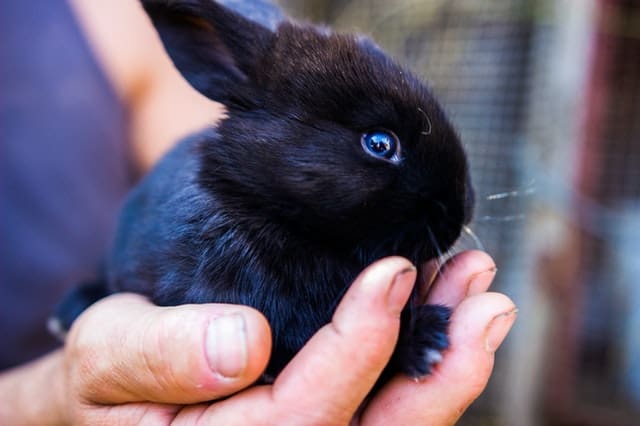
To have a rabbit as a pet, you have to understand a series of questions about rabbits in freedom, in this way we will have the necessary knowledge to take better care of them and cover all their needs. In this post we will tell you the basic aspects that you should know so that you have a coexistence of ten.
Recommendations for the care of rabbits
Have you fallen in love with a bunny and couldn’t resist its charms? It does not surprise us. They have that huggable look that every self-respecting animal lover would want to have one in their home. But to be able to take charge of one, it is essential to know them first. Do you want to know a little more about them?
To get to know our new friend a little more, we have to think about how wild rabbits live: enjoying races in the open air and smelling the flora of the place everywhere. But being sociable and very intelligent animals, they are easily domesticable, always respecting an adaptation period. Over time they will come to respond to your name and are able to learn tricks in exchange for their favourite snacks.
They will like to spend time with you, but be careful when taking it, never do it by the ears, you would do a lot of damage. It is best to hold it by the skin between the shoulder blades with one hand and the buttocks and hind legs with the other. But it is important to understand that a rabbit is not a stuffed animal, so respect it and do not harass it.
The part that it likes to be stroked the most is the base of the ears. This is important for the youngest of the family to learn, children can begin to respect and enjoy the company of these animals from 6 years of age.
Before adopting a rabbit make sure that no one in the family is allergic, especially the little ones in the house.
Finally, pets are an opportunity to teach values such as responsibility, animal empathy and develop respect and sensitivity towards other living beings.
Can I let a rabbit free at home?
You should give your rabbit time every day to move freely and encourage them to play and exercise.
They are intelligent and clean animals, so with patience they can be trained to relieve themselves on the absorbent bed and corner pieces. So the time outside the cage can be prolonged without diminishing household hygiene .
In fact, there are people who decide that their rabbits are free at home after the learning period. In this case, you have to hide cables or prohibit access to dangerous areas, such as the kitchen or wooden furniture.
Others leave them free in the yard or garden, so you have to be careful with possible predators and provide the rabbit with a safe and prepared place for inclement weather. In both cases, by leaving them in semi-freedom, it does not mean that attention and affection must be paid.
As we have said, rabbits are very intelligent. With love and patience they can learn basic tricks and routines. When you have them out of the cage, provide them with a corner guard so that it can go to it to do its needs. During learning, apply positive training and reinforce their behaviour every time they relieve themselves in the corner or litter box.
Is it better to have rabbits in pairs?
Rabbits are gregarious animals, this means that they live in company. Consequently, having two copies would be ideal for the health of your pet .
In case of having only one rabbit, the owner must dedicate more time to be together. This is very important, as you could get depressed and sick.
If you definitely decide to have two rabbits, remember that you should expand the cage space and castration would be recommended for coexistence, whether between specimens of the same or different sex.
In the case of males, castration would mean that they would not mark with urine at home and would not suffer from the anxiety caused by heat, in addition to not leaving the possible female partner pregnant.
So make an appointment with your vet and follow their recommendations on when is the ideal time for neutering.
Cage and accessories
What should a rabbit cage be like?
The cage should be large enough for the rabbit to be as comfortable as possible, that is, around 69 cm long, 47 cm wide and 35 cm high. There are smaller ones but our recommendation is that you buy it as large as possible so that you do not suffer from anxiety. In the event that you consider having a couple of bunnies, you will have to expand the space to at least 4 square meters.
The cages have the function of burrowing for rabbits, it is the place where they can feel safe and calm. That is why they must always be clean, designed and with the necessary accessories for your well-being.
Where to put a rabbit cage?
Obviously, the cage should be located away from drafts and direct sun. In addition, it should be a quiet area for their sleeping hours and remember that they must leave the cage daily.
What accessories does a rabbit cage need?
Our friend’s cage must have a container for hay, a drinker of at least 450 cc, a ceramic feeder, a wooden shed and a corner so that it can relieve themselves. Because they are so curious and playful, they like to have toys and strings designed for them, so that they cannot harm them.
Bedding and cleaning
How to clean a rabbit cage?
The best thing to keep your cage clean is that you use biological beds, such as vegetable beds, or shavings, which raise little dust. You must clean your feeder and drinker every day, and the vegetable base must be changed approximately every 2 days. The hygiene habitat and cleaning entire cage once a week with hot water and mild soap.
How to maintain the hygiene of a rabbit?
You will have to monitor the growth of their nails and the cleaning of their ears. Do not bathe it frequently, when you do it you must dry it perfectly to avoid possible respiratory problems.
How to maintain the hair of a rabbit?
Brush it whenever you can, if it has long hair, do it with a long tooth comb and give it malt to prevent hairballs from forming in my stomach.
Feeding the rabbits
What do rabbits eat?
You need good quality hay, concentrated nutrients and dry feed, snacks and fresh food, all twice a day. Alfalfa is also important, but never exceed 40% of your food.
As for fresh food, you can eat fruits and vegetables such as apple, pear, melon, strawberry, grape, carrot, celery, endive, pepper and endive, but be careful! fruits and vegetables that are high in water and low in vitamins, such as lettuce, can cause diarrhea and dehydration.
Needs
Finally, we would like to make a compilation with all these things that if you buy before you get home, they will make it easier to adapt to your new home.
Arrival home (basic)
- Feed
- Hay
- Cage
- Feeder
- Drinker
- Hay container
- Hygienic bed
- Toy
- Alfalfa
Health care
- Food I think of quality
- Anti-mite insecticide
- Vitamin supplements
- Mineral salts stones
Fun
- Toy (made of rope, wood …)
- Snack in the form of bars
- Fruit and vegetable snack
- Harness and leash
- Wooden hut
Hygiene
- Woods for teeth
- Brush, card and hair comb
- Shampoo
- Nail clipper
- Cologne
We hope this series of tips for the first days with your rabbit at home has helped you.






